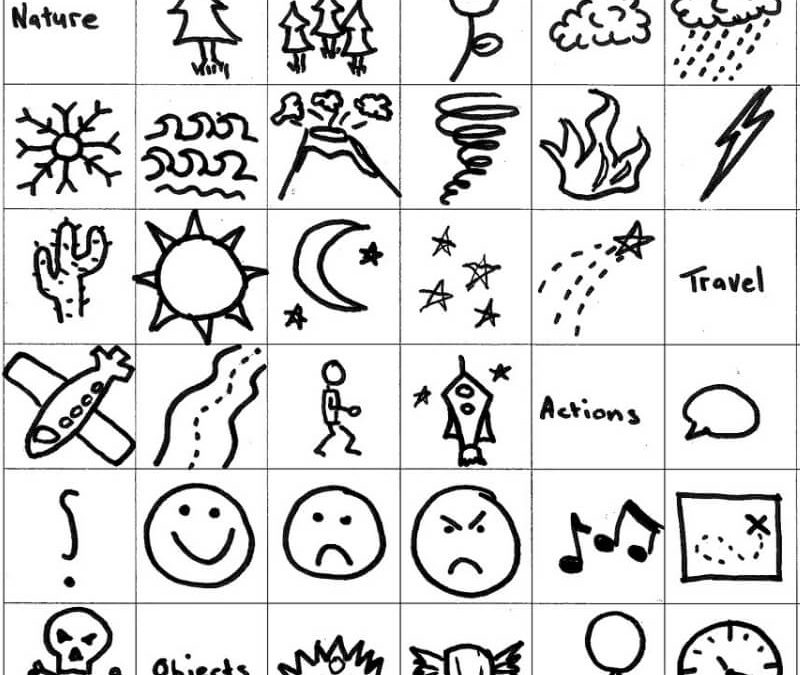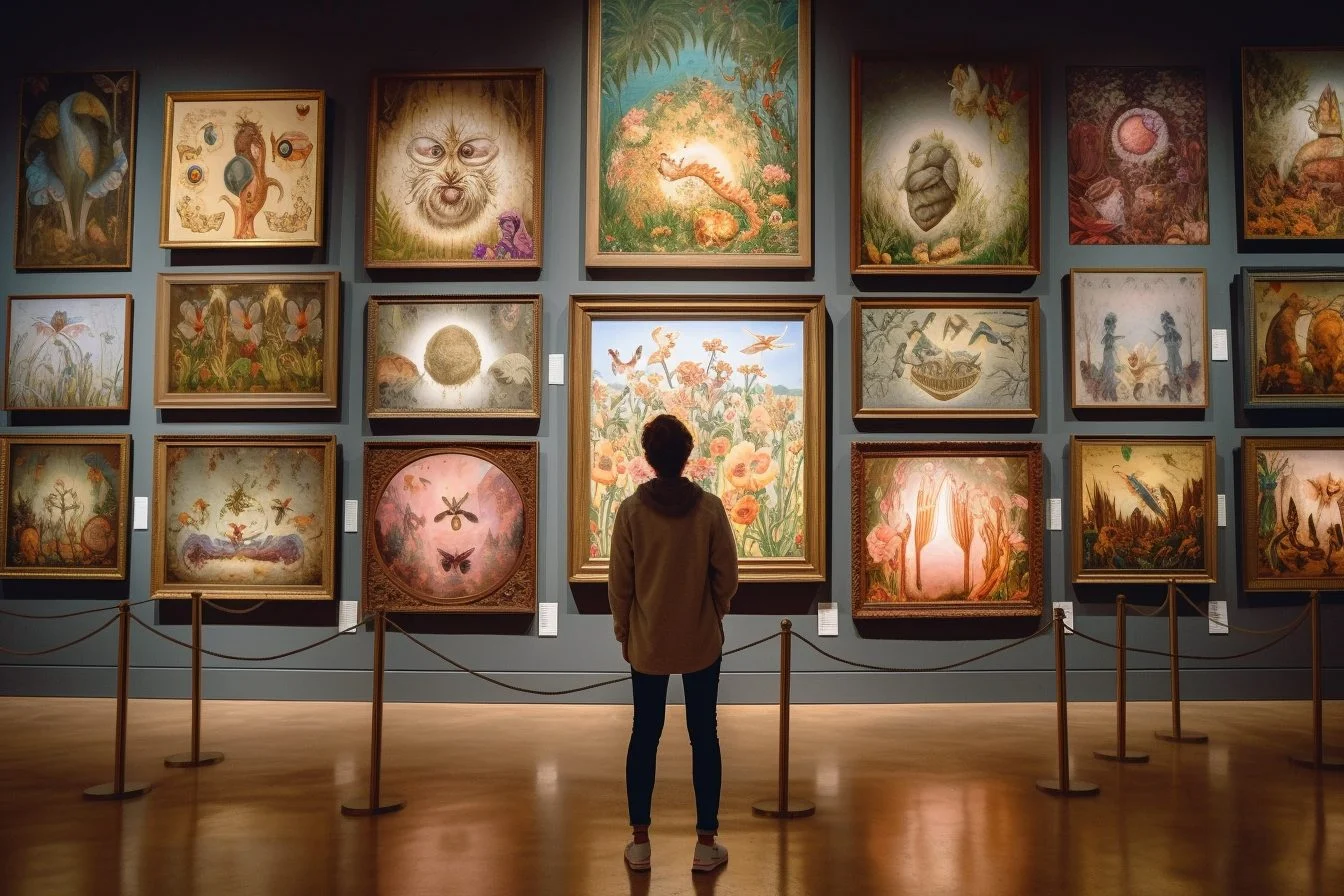Symbols in art serve as powerful tools for conveying messages and narratives. Imagine deciphering a secret code to unlock the story hidden within a painting or sculpture.
Understanding these symbols is like having a key to unraveling the artist’s intentions and the deeper meaning behind their work.
This article aims to demystify the importance of symbolism in art, guiding you through the process of decoding these visual cues to appreciate the rich narratives they communicate.
By learning to recognize and interpret symbols, you’ll unlock the captivating stories woven into the fabric of art history, making your exploration of art all the more rewarding and enlightening.
What is Symbolism in Art?

Symbolism in art is like using secret codes to tell a story or convey a message. Imagine trying to paint an idea like “courage” or “love” directly—it’s pretty tricky, right?
So instead, artists use symbols, like a lion representing courage or a rose standing for romance. These symbols make the artwork more powerful because they carry meanings beyond just what you see.
For example, think of a painting with a majestic lion. Its strong posture, fierce expression, and flowing mane all hint at qualities like bravery and strength without saying a word.
When you look at it, you don’t just see a lion—you feel its courage and power. That’s the magic of symbolism in art—it brings abstract ideas to life, making them easier to understand and feel.
The Importance of Symbolism in Art
Symbols in art are like hidden treasures waiting to be discovered.
When artists incorporate symbols into their work, it adds layers of meaning and depth. These symbols serve as clues, inviting viewers to embark on a journey of interpretation.
Art is more than just colors and shapes; it’s a narrative waiting to be told. Symbols act as storytellers, conveying messages and emotions that might not be immediately apparent.
They ignite our imagination, prompting us to ponder their significance and explore the artist’s intentions.
Think of symbols as puzzle pieces scattered throughout a masterpiece. Each symbol adds a new dimension, encouraging us to piece together the larger picture. It’s like going on a treasure hunt, where every symbol uncovered unveils a part of the story.
In essence, symbolism enriches art, making it not only visually appealing but intellectually stimulating. It transforms a mere painting into a captivating tale waiting to be unraveled, inviting viewers to engage deeply and find personal meaning within the artwork.
How Do You Create Your Own Symbols in Art?

Creating your own symbols in art is like telling a story visually. You start by understanding what symbols are and how they convey meaning. They’re not just individual images slapped onto your canvas; they’re integrated into every aspect of your artwork.
Think of your paint colors, brush strokes, marks, and composition as the vocabulary of your symbol language. They all come together to convey your message. You’re not just painting a picture; you’re weaving a narrative.
When you create your own symbols, you’re essentially inventing a new language for your art. These symbols can be anything you want them to be—there are no rules. The key is to make them work together harmoniously to express your message.
By using your own symbols, you’re making your voice heard through your artwork. You’re the storyteller, and your paintings are the stories you’re telling visually.
So, let your creativity flow and craft symbols that speak to you and your audience.
Commonly Used Symbols In Art
In art, symbols are like secret messages that artists use to add deeper meanings to their work.
Let’s decode some of the commonly used symbols in art:
- Skulls: When you see a skull in a painting, it’s like a sign saying “death is here.” It’s a symbol of mortality.
- Purple Clothing: Purple clothes in art are like a fancy way of saying “royalty” or “wealth.” It’s a color associated with power and luxury.
- Candles: A lit candle stands for truth and knowledge, while a blown-out one represents loss and the end of something. They can also show the passing of time, depending on how much they’ve burned.
- Books: Books in art represent education, knowledge, and learning. They’re like a symbol of being smart and well-educated.
- Flowers: Flowers are symbols of life and growth. A fresh bouquet means power and growth, while wilting flowers suggest loss or the end of something. Different types of flowers have different meanings, like red roses for love and white flowers for purity.
- Palms: Palms are a sign of victory and peace. They’re like a symbol of winning and harmony.
- Musical Instruments: These represent wealth and celebration. Music is often played at parties and celebrations, so musical instruments in art are a way of showing that the people in the painting are having a good time.
- Shells: Shells symbolize good fortune and purity. They’re like gifts from the sea, bringing luck and blessings.
- Mirrors: Mirrors are used to show vanity or self-admiration. They can also reveal hidden truths or expose lies. A broken mirror is seen as bad luck.
- Butterflies: Butterflies symbolize hope, transformation, and joy. They represent life and freedom because they go through a big change during their life cycle.
- Dragonflies: Unlike butterflies, dragonflies are a symbol of death. They represent the end or decay of something.
- Insects: In art, insects often represent decay, death, or greed. They’re like a reminder of the darker sides of life.
- Eagle: An eagle symbolizes strength and power. It’s like a sign of being strong and mighty.
- River: Rivers symbolize eternal change and flow. They’re like a metaphor for life, always moving and changing.
- Sun: The sun is a symbol of life and strength. It represents warmth, light, and energy.
Conclusion
Symbolism in art acts as a hidden code, weaving intricate narratives that transcend mere visuals, where understanding symbols unlocks the profound intentions and deeper layers of meaning embedded within artworks, allowing artists to communicate abstract concepts and emotions through tangible representations – a universal language that infuses pieces with richness and depth resonating with viewers on a visceral level.
By delving into the world of symbols, we embark on an interpretive journey, peeling back layers to reveal hidden truths, immersing us in a world where every stroke and shade carries significance, elevating art from visual spectacle into profound reflection of the human experience, allowing us to discover meaning in every brushstroke and sculpted form.


Leave a Reply